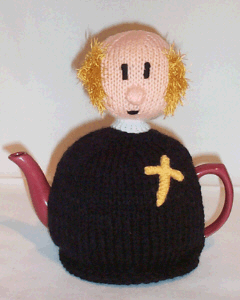 By Tony R Stevens
By Tony R StevensA kid's herb garden is a great way to give with no previous exposure to gardening the opportunity to see how things grow. For a child who has grown up doing gardening chores, it's a way to share the joy of planting and caring for a garden of their own. A child's personal garden of herbs can be fun, yet provide rewards for work well done.
The size of the herb plot must be one that a child can handle. A plot that requires adult help to prepare and manage is at least partially missing the point of the garden. This doesn't mean that you can't help your child to work in the garden. The space should be big enough so that more than one plant can be placed. Several varieties of herbs are best, since they won't all develop at the same rate. A container such as a window box will hold a fair-sized selection of herbs.
One way to manage the size of the herb garden is to use several small pots, one for each type of herb. You can move pots around to get better sunlight and watering opportunities when you might not be able to move a larger single container. It's important for the child to help you choose the container, with your guidance.
When you and your youngster are selecting herbs, don't get carried away with exotic or sensitive plants that are hard to grow. They should have some variation in colour, sprouting time and mature size. Think about where the plants will be housed and pick plants that are suited to that level of sun and shade. Choose fast-growing plants so that your child can see the sprouts coming through the soil rather soon after planting.
Watering the plants is another gardening task that should be the responsibility of the child. You can teach children how to measure for moisture in the soil. Giving plants regular watering and care teaches responsibility.
Expand your child's interest in the herb garden by associating the fresh herbs with the foods that they season. This can add a lifeline interest in cooking to your child's portfolio of skills. Fresh herbs react differently than dried herbs, but using the fresh herbs can make dishes possible that would not taste as good with dried herbs. Fresh thyme, fresh summer savory and fresh basil each taste delicious in soups and stews.
Children who love to do crafts may want to use their fresh herb plants as gifts for relatives and friends. Dried herbs can be packaged in small containers and given to those who enjoy gardening. Herbs are great for gardening friends or those who enjoy cooking with fresh herbs.
There is a lot of creativity in choosing favorite containers and plants to be included in a kid's herb garden. Children can exercise their artistic style as well as develop a sense of responsibility when they grow herbs. The benefit of getting joy from growing things is another great advantage of children's garden plots.
Are you looking to create your very own herb garden? Are you wanting to grow your own plants?
Tony Stevens is a freelance Expert Author and an herb garden enthusiast who understands how you feel. Looking for good and effective ways to growing a Kids Herb Garden you and your children can be proud. Tony Stevens did the research and came up with some effective methods to get your herb garden up and running in no time, at home that anyone can try. Visit his site today Gardening With Herbs to find out essential information advice and new strategies.
 Make a beautiful stained glass effect Halloween Lantern, a beautiful Halloween decoration for any room. Made from a paper lampshade which will fit and ceiling light. When the light is switched on you see the full effect of the stained glass effect. Halloween Lanterns are a great alternative to pumpkins or Jack o Lanterns.
Make a beautiful stained glass effect Halloween Lantern, a beautiful Halloween decoration for any room. Made from a paper lampshade which will fit and ceiling light. When the light is switched on you see the full effect of the stained glass effect. Halloween Lanterns are a great alternative to pumpkins or Jack o Lanterns.










